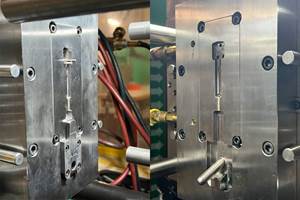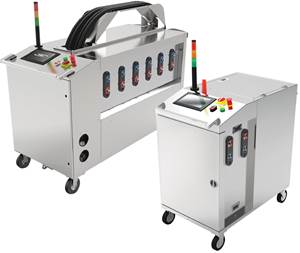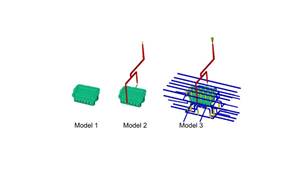Everything You Wanted to Know About Mold Maintenance
Welcome to a new column dedicated to improving efficiency in your tool room and the health and performance of your molds.
Welcome to a new column dedicated to improving efficiency in your tool room and the health and performance of your molds. This column will cover real-world maintenance issues from both the blue-collar and white-collar sides of the bench. These issues will range from “best practices” for mold repairs to administrative subjects such as training and evaluating shop personnel, promoting craftsmanship, and improving communication, data collection, and data utilization.
This column will be directed toward injection molding shops—my own area of experience—but many of the principles discussed should be relevant to other types of plastics processing.
About the ‘art’
Mold maintenance has always been considered one of the “black arts” of plastics processing. That’s because there is little in the way of formalized training programs for mold-repair technicians or managers. There is no accessible knowledge base of standardized practices and procedures—no mold-maintenance “bible” to turn to, for example, when a hot runner begins to ooze plastic from the top of the electrical box during a critical production run. Most of the time, there’s just “Bob,” the guy with the “black art.”
For the vast majority of skilled trades—electricians, machinists, woodworkers, etc.—there are approved ways to evaluate one’s level of competence. There is a test to pass, blueprints to read, or a machine to master. But many employers aren’t sure what kind of background a technician should have to qualify for repairing a $350,000 mold. So they assume they need to hire top-shelf tool makers, even though most toolmakers despise mold repair because it does not require their fabrication skills as much as solid mold troubleshooting experience.
Other companies just hope that “Bob,” the plant handyman, can fix it. If he does, and if you ask him what he did, he will probably just give you a knowing wink and a tap on his temple. Bob himself might not be quite sure why the problem went away. And if he didn’t manage to fix the problem, he’ll tell you it’s most assuredly a processing issue.
Management’s role
I have talked with many talented employees who want to improve mold-shop efficiency but are administratively handicapped. They get bogged down and burned out as their poorly equipped repair shops fill up with half-assembled molds waiting to be hand-cleaned or to be fitted with components that should have been in stock. Supervisors bring in molds that have been victimized by water or oil leaks, missing parts, loose bolts, or being just plain pounded to death. Of course, no back-up molds are available, so the finger-pointing begins.
Typical mold-maintenance functions such as disassembly, troubleshooting, repair, cleaning, and assembly can and should be standardized and formalized. A systemized approach can bring significant benefits:
- Reduced labor hours and spare-parts usage.
- Reduced or eliminated part defects.
- Reduced scrap rates and downtime.
- Improved part quality.
- Improved mold performance and reliability.
- Improved skill levels and morale of repair technicians.
To compete today, quality craftsmanship in mold maintenance can no longer be an elusive “art” that companies only hope their technicians have. It must be a job requirement. Maintenance technicians must be accountable for what they do. This can occur only by shifting to a systemized approach to understanding and correcting mold defects. Supervisors and managers must be able to measure mold performance and repair criteria—they cannot improve something they can’t measure. Through upcoming articles, I hope to show how this is accomplished.
Steven Johnson worked as a toolmaker for 26 years, rebuilding and repairing multicavity molds for Calmar Inc., and today is a mold-maintenance engineer for Hospira Inc., a medical device manufacturer. He also founded MoldTrax in Ashland, Ohio, which designs and sells software for managing mold maintenance (www.moldtrax.com). He can be reached at sales@moldtrax.com or (419) 289-0281.
Tips on Removing Tooling
Removing close-tolerance tooling for cleaning, inspection, or replacement is one of many mold-repair jobs performed on a daily basis. Two important factors to consider when removing tooling are timing and technique.
Tooling should be removed only after troubleshooting a part defect. If you remove all the tooling before troubleshooting, then you have to sort through all the cores and cavities to find the one in question. And if all the tooling is not numbered correctly, you might not find the piece you need to determine corrective action.
Thorough cleaning should come only after the cause of the defect has been found or the tooling has been ruled out as a probable cause. Otherwise, cleaning can remove valuable evidence for repair technicians to “read”—such as the amount of vent residue, corrosion, grease, plating wear, dis coloration, small track lines, hobbing, or galling.
Regardless of how accurate you believe you are with a hammer, never ever use a steel ball-peen or claw hammer to remove tooling. A misplaced swing with one of these can cost hundreds or thousands of dollars in damage. Soft brass or copper punches are acceptable in most cases for removing tooling, although my preference is for nylon or other plastic.
More critical are the sizing and placement of the punch. When rushed, technicians may be tempted to use a brass rod to remove cavities and inserts without taking a few minutes to properly size the working end on a lathe. Since brass is softer than the hardened steel insert, they think they can “size” a punch to a particular hole by just driving it in. I have done as much (and worse), and I know how easy it is to shortcut a professional approach when pushed to get a mold back into production.
Never mix up mold tooling—number it and always return it to its “home” position. Tooling parts, especially when located by dowels or flats in a specific orientation, have a tendency to “seat” during production. A “seat” is a distinctive running fit that develops between pieces of close-tolerance tooling. Disturbing this fit makes it impossible to forecast tooling life and complicates troubleshooting.
Tooling should be handled and stored in a manner that protects critical sharp edges from bumps or drops. Use wood or plastic trays to store tooling removed from mold plates. Carefully arrange the tooling in cleaning baskets—don’t throw it in haphazardly.
Always maintain complete physical control over tooling during removal. Molds may have several cavity inserts stacked inside housings, which will shoot out onto the bench if not controlled. Cavities and cores containing o-rings will feel tight upon initial movement, but then practically fall out of the bore when backed out a short distance.
If your two hands can’t completely control the tooling, ask a helper to catch it as you remove it from the plate. To offset the need for extra hands, I came up with a slide hammer that can save time, money, and banged fingers.
Right tool for the job
Many years ago, I was working on the second shift at a closure manufacturer when a monster mold with loads of inserts landed on my bench. The inserts buried inside this old 48-cavity mold had to be removed for cleaning.
The challenge was to tap the inserts out of the bore just far enough to loosen them without letting any fall onto the bench and risk being damaged. Since I was the only technician on this shift and could not find another set of willing hands, I could only attempt to tap out the inserts to a point that would allow me to lay the hammer down, push them out the rest of the way with the punch, and grab them with my free hand. Inevitably, some inserts fell out. I could have laid the plate down on parallels and punched the inserts out, but that would have risked the expensive parts banging into each other while hidden under the plate.
The answer was to design something that would allow me to remove tooling quickly and safely with only two hands. The result looks and works like a typical slide hammer, but with two important differences. The weight on most slide hammers is used to pull out pressed-in components. The weight on this hammer is used to push out components, and the shaft is lightly spring-loaded to return the sliding weight to the end of the rod, allowing you to hammer quickly but with control.
This light spring pressure keeps the punch end of the tool in contact with the components being removed, regardless of the speed of repetitive blows. The spring also keeps the punch lined up so aiming is unnecessary, eliminating miss-hits on tooling and your fingers. It cuts down on rebounding and allows you to better control the exact amount of force, or length of stroke, needed to move the insert. And since the punch extends all the way through the inserts, keeping them together is easy.
The result is a one-handed hammer/punch combination that allows complete control over where and how much force is applied to the inserts. This frees up the other hand to control the tooling on its way out.
I threaded the punches for attachment to the slide rod, although you could easily fabricate a quick-disconnect or use a setscrew against a flat. The tool is easily constructed of common materials (stainless steel, brass, or bronze) found in tool rooms. You can also buy it from the source listed under the illustration.
Related Content
3D Printing of Injection Molds Flows in a New Direction
Hybrids of additive manufacturing and CNC machining can shorten tooling turnaround times.
Read MoreBack to Basics on Mold Venting (Part 2: Shape, Dimensions, Details)
Here’s how to get the most out of your stationary mold vents.
Read MoreSystem Offers 'Lights Out' Mold-Channel Cleaning & Diagnostics
New system automatically cleans mold-cooling lines—including conformal channels—removing rust and calcium, among other deposits, while simultaneously testing for leaks, measuring flow rate and applying rust inhibitor.
Read MoreHow to Achieve Simulation Success, Part 1: Model Accuracy and Mesh Decisions
Molding simulation software is a powerful tool, but what you get out of it depends very much on your initial inputs. Follow these tips to create the most successful simulation possible.
Read MoreRead Next
Beyond Prototypes: 8 Ways the Plastics Industry Is Using 3D Printing
Plastics processors are finding applications for 3D printing around the plant and across the supply chain. Here are 8 examples to look for at NPE2024.
Read MorePeople 4.0 – How to Get Buy-In from Your Staff for Industry 4.0 Systems
Implementing a production monitoring system as the foundation of a ‘smart factory’ is about integrating people with new technology as much as it is about integrating machines and computers. Here are tips from a company that has gone through the process.
Read More












